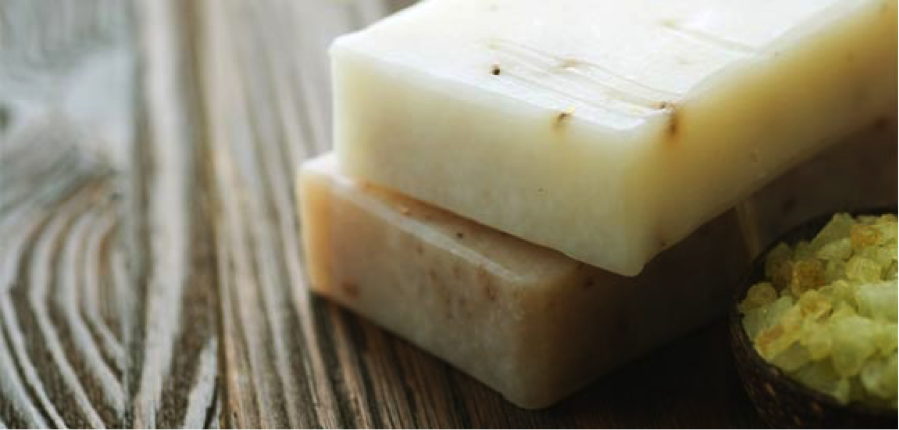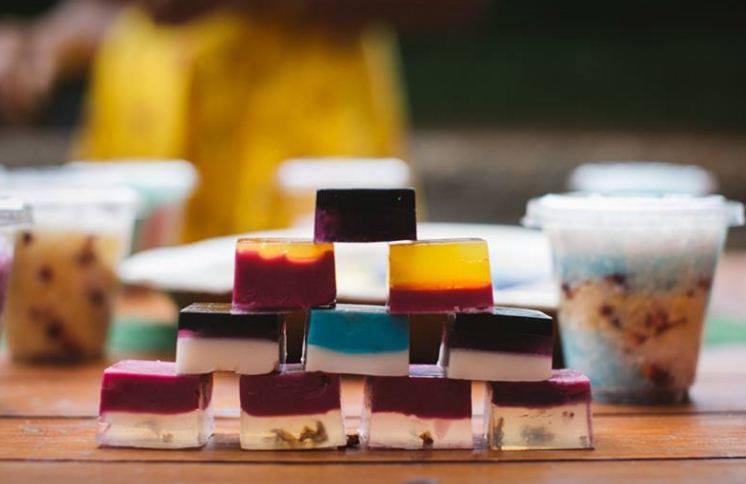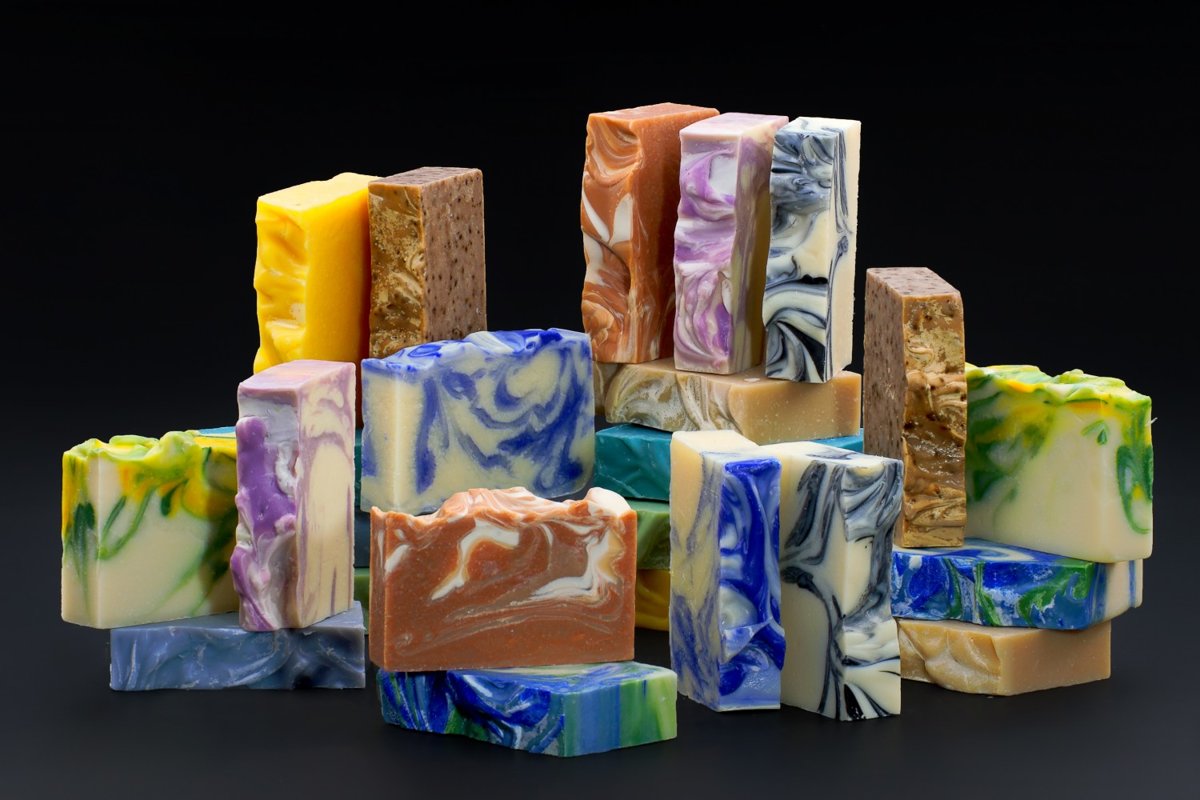Just how to Tidy Your Soap-Making Tools
14 Nov, 2018,
No comments

So you have actually made your own excellent batch of soap. It has actually been determined and heated and combined and also swirled and also lastly poured right into the mold and mildew. You cover the mold carefully with a towel as well as established it aside to do its magic. You beam with pride for developing a set of soap. For more information about Saponification you may go here.
After that you reverse and see the mess you have actually just left: a large pot with a bunch of raw soap in it. What do you do?
Lye Containers
Your first cleansing problem ought to be to manage the elements that held lye. This soap component is caustic, it can cause extreme burns if it touches your skin.
You will require to clean the bottle and determining mug that you utilized to blend the lye right into the solution. There is likely to be numerous declines left. Make certain to rinse it out well. Simple water works penalty.
Rinse the spoon that you utilized to stir in the lye. Likewise, wash off anything that may have been available in call with the lye such as your gloves as well as a thermostat. Look thoroughly around your soap-making station for lye decreases or granules that might have dropped when making your soap combination.
Raw Soap Devices and also Vessels
As soon as you have actually dealt with the pure unmixed lye, after that you additionally have the raw soap to handle. It's really not rather soap just yet. There is still a great deal of lye and oils duke it outing each other. It may be starting to saponify, however it is still rather caustic. While it will certainly not shed you as severely as pure lye, it will cause some inflammation on your skin and also can shed your eyes.
Primarily, make sure to scrape every last decrease of the soap from the pot as well as right into your mold and mildews with a rubber spatula. With less waste, there is much less to clean up.
Then, you can wipe the pot out with paper towels and also toss them away. This will get the pot clean adequate to rinse with water, put in the dishwasher, or just leave it until your next batch.
If you do not want to handle paper towels as well as cleaning, you can use a lot of hot water as well as soap and clean it away. The slight threat there is that the oils and lye are not soap yet, so it is feasible that some of it might embed your drainpipe.
Leave It for the Next Day
If you can tolerate leaving some mess until later, you can set aside the things with raw soap on them like your stick blender or food processor, your spoons, as well as your soap pot. Cover those things with a cotton towel or lid, as well as just leave it up until the following day. By the following morning, the oils and also lye will certainly be soap as well as you can clean it up in the sink easily with no danger to the drain or your skin.
If you do this, see to it you plainly label these items as "dangerous" or "dangerous" as they rest over night during the saponification process. Notify various other innocent member of the family and also meticulously tuck these products well out of reach. You do not want to run the risk of anyone from obtaining shed from your soap-making tools.
Saponification in the Soap Making Refine
14 Nov, 2018,
No comments

Soap making is an easy process that requires couple of ingredients or devices actually, a number of the ingredients and devices may currently be in your kitchen area. Soap making requires cautious measurements as you are making use of chemicals, a few of which can be dangerous. The chemicals produce responses: saponification is the key chemical reaction of soap production.
Exactly How Saponification Happens
Saponification is an exothermic (emits warmth) chain reaction that takes place when fats or oils (fatty acids) come into call with lye (a base). Saponification literally indicates "becoming soap" from the origin word, "sapo," which is Latin for soap. The byproducts of the saponification response, in which the fatty acid and the base integrate, are glycerin and also soap.
Soap Making Calculator
Oils as well as fats each have what is called a saponification worth, which is the amount of lye required to totally counteract them right into the soap without lye left over. Each oil has a different worth, which is why it s vital to constantly run soap recipes via a lye calculator. The calculator will certainly help make certain that the proportions of water, oils, and lye are proper and will create the outcomes you are seeking.
Homemade Soap Contents
There are numerous variables that will influence saponification as well as different soap components have very distinct qualities. Make sure to look into the types of acids you are using (ex-spouse: coconut oil, olive oil, and so on) and the outcomes they may have on the final soap product. Relying on the ingredients utilized, soaps can differ greatly with various characteristics such as soap, bar uniformity, and cleaning ability.
A lot of the components for soap making can be found in a grocery store or hardware shop, which are also used by soap company like D and C. Make sure to buy pure top notch lye that is made especially for soap making. In addition to the standard soap active ingredients, there are lots of options that can be contributed to the soap to modify the scent, consistency, and shade of the soap. When the basic soap making has proven successful, try experimenting with other soap variants.
The saponification typically takes regarding 24-48 hrs to finish once the lye and oils have actually been combined and also the raw soap has actually been poured right into the mold and mildew. This procedure can be quickened by adding even more warmth or decreased by maintaining the procedure really cool.
Saving Homemade Soap
Homemade soap should be left to air dry for roughly 4 to six weeks. This is referred to as the curing time and also it will allow for any kind of excess water to evaporate out of the soap. It's best for the soap to be in a great, completely dry place, not touching anything else, while it is drying. A footwear box in a dark wardrobe is a perfect place. If the homemade soaps contain any kind of fragrances, store each fragranced soap in its very own box so the scents do not mix. When the soap is cured, make sure to classify it with the active ingredients made use of and the date the soap was made.
To get more information about how to Speed Up or Decrease Trace in Homemade Soaps click here.
Speed Up or Decrease Trace in Homemade Soaps
14 Nov, 2018,
No comments

" Trace" is one of those words that soap manufacturers throw around that implies something somewhat different to each individual. Trace is primarily the point at which the soap has enlarged and mixed enough to have created a secure solution. It's a "point of no return" where the oils as well as lye are no longer at any kind of danger of separation. It is also necessary to keep your soap making tools tidy.
Past that "climax" there are a lot of variables.
There are soap manufacturers that pour at "really light trace" which might just take a couple of short blasts of the stick mixer to achieve. The soap will still be watery as well as won't have the ability to sustain the telltale traditional "dribble" of soap on top of the mix, yet it will certainly still be well mixed enough to not divide. On the various other end of the spectrum, there are soap makers who choose to put (or scoop) at "hefty trace" which is thick and also pudding-like.
Both blends are fine, as well as both might have been stated to have actually reached trace.
Yet what about the time it takes to get to trace? Despite whether you pour at light or hefty trace, sometimes it takes a while to get there, and also occasionally it happens quite rapidly. What causes this?
Elements Impacting Soap's Trace Time
Kevin Dunn, in his wonderful publication Scientific Soapmaking, claims that the quantity of mixing straight is the main factor of the time it takes soap to get to trace. That's why using a stick blender or food processor is so much quicker than simply mixing with a spoon. However over as well as beyond blending, he claims, there are three factors that can influence the moment it takes for soap to get to trace: water content, temperature, and drivers.
Just how much water you make use of in the recipe affects trace. More water means a slower trace. If you have a dish that asks for four ounces of lye as well as you make use of eight ounces of water, all various other points remaining equal, it is going to obtain to trace quicker than if you used 10 or 12 ounces. If you have a dish that is getting to trace also quickly, you can add more water to it to reduce things down.
The greater the temperature, the quicker your soap will reach trace. Even the distinction of just 10 degrees, soaping at 100 degrees F rather than 90 levels F can make a distinction. If you have a recipe that's relocating as well promptly, drop your soap making temperature levels. Aside from the oils beginning to solidify, you really aren't going to run any type of danger of the lye and also oils obtaining "as well cool." You can make whipped soap with space temperature level and even cooled oils as well as lye.
Stimulants are one of the most significant variables in the trace. Most soap makers have actually experienced a take, when you're making soap from the ground up and it goes from liquid to a thick mess in simply a few seconds. We're not rather speaking about seizing, however. There are other ingredients that quicken trace, equally as reducing your water, or boosting your temperature would certainly. Some oils are slower or quicker to map than others. Yet not as long as some particular soap dish ingredients.
Active ingredients to Quicken Trace Time
A few of the active ingredients that can speed up (accelerate) trace include seasoning important oils especially clove, scent oils containing clove oil or clove oil components, some floral fragrance oils, and also honey, beer, and also other sugar-containing fluids
Any kind of one aspect the water, the temperature, the components can influence the speed of the trace. So each recipe is mosting likely to be simply a bit different.
Whether you pour your soap at light trace or hefty trace, it's still mosting likely to make soap. As long as you get to that climax where the oils and also lye won't separate, you're great. But if you're utilizing elaborate mold and mildews, or specifically if you're trying to produce swirls of shade in your soaps, you possibly desire your soap to get to trace as gradually as possible.